About
Tourism Tsunan / Tsunan Tourism
Tourism Tsunan / Tsunan Tourism
Tsunan is one of the few places in the world where people lead their lives among exceptionally heavy snows, and have been doing so since the Jomon era. The forests, water, snow, and river terraces have supported a sustainable way of life. Step by step that nine-tiered land has nurtured a stable forest environment and a variety of agricultural practices. The large amount of snow that falls in winter soaks through the strata and then springs up through the surface again to moisten the plateaus of that land.
This gradually overlapping land is the stage for a life that weaves together a peaceful way of living, a variety of agriculture, and timeless creativity. When you take a moment to think about it, you can only come to the conclusion that our existence has been made possible by the land itself. Furthermore, connecting the important resources that have been passed down by the ancestors of this land to the future is a must, and this is an important role of Tourism Tsunan.
地理院タイルを「Web等高線メーカー」サイトで作成
| From Tokyo | Ishiuchi Shiozawa IC→Route 353→Route 117→Tsunan town (About 26km / 40 mins) |
| From Niigata | Echigo Kawaguchi IC→Route 117→Tsunan town (About 32km / 50 mins) |
| From Tokyo | Joetsu Bullet Train to Echigo Yuzawa Station, Bus to Tsunan-machi-yakuba-mae bus stop (About 50 mins from Echigo Yuzawa to Tsunan) |
| From Niigata | Joetsu Line then change to the Iiyama Line at Echigo Kawaguchi to Tsunan Station |
The charms of Tourism Tsunan are captured by the nine keywords that describe it. Using these keywords as a starting point we will dive deeply into the stories and experiences contained within.
#
Peaceful
If you think of a peaceful land where tranquil lives have continued through the ages...
Tsunan town has one of the most impressive river terraces in Japan. Those flat lands have nurtured a stable forest environment, and supported peaceful human life since the Jomon era. While sensing the smell of the soil and the coolness of the water, supported by the land, people have lived well here. Being a peaceful place it also opens up the possibility of becoming a place of retreat.
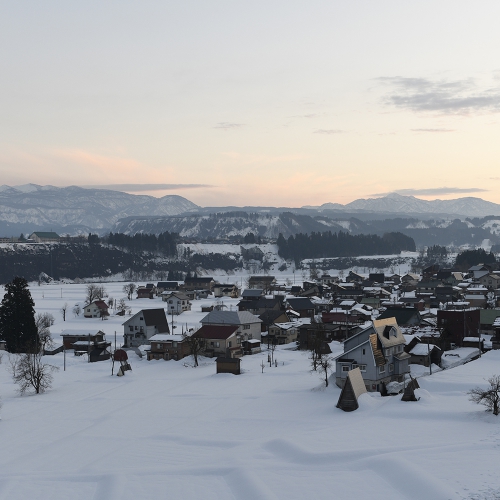
1
#
Jomon
If you think of a prehistoric Jomon land that influences modern lives...
Tsunan is an unusual place in that people have been living here in harmony with the forests throughout the Jomon period which lasted for over 10,000 years. It is said that large Jomon settlements were scattered across the river terraces. Activities that continued through the Jomon period can give us hints about sustainable living today.
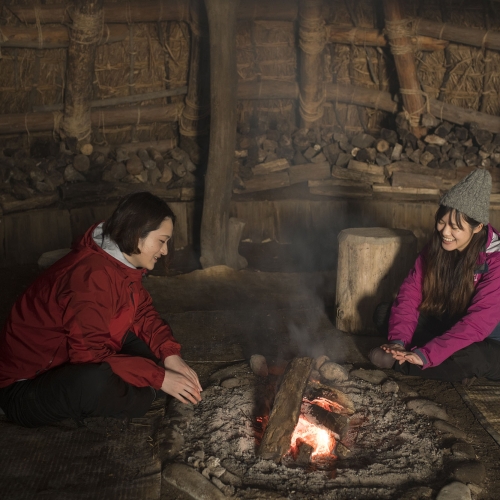
2
#
Agriculture
If you think of an agricultural land that has been nurturing lives since time immemorial...
Agriculture is the mainstay of the town. Tsunan supports many types of agricultural production with rice on the lower terraces, vegetables on the mid-levels, and highland crops on the plateaus. There is also an innovative spirit, and the record breaking heavy snows are put to good use as special snow storage for crops like carrots and lilies.
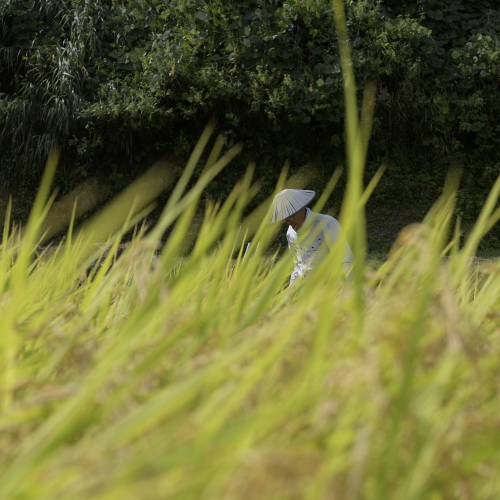
3
#
Art
If you think of a creative land where lives have always intermingled ...
Tsunan hosts the internationally known contemporary art festival “Echigo Tsumari Art Field”. Many artists and visitors from Japan and overseas come to enjoy the fusion of works of art with the countryside scenery. If you allow yourself to go back in time you can feel the connection between the art of our modern age and the creativity of the ancestors who sculpted the amazing flame-shaped pottery found in the region.
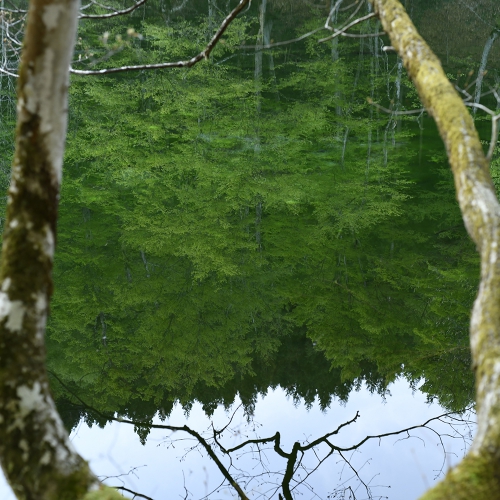
4
#
Flame-shaped
If you think of the flame-shaped land where lives have been swirling forever….
How did the flame-shaped pottery that Taro Okamoto so praised come about? One theory is that it is a combination of patterns that could be found in the surrounding area. It is thought that because of the geography of the area, with the Shinano River flowing through and various mountain ridges which meet at Tsunan, that it could have been a place where people came together. There are some researchers who propose that those people thought up their creations during the long periods that they were confined by the winter snows. Dynamic modeling that transcends dimensions stimulates our imagination.
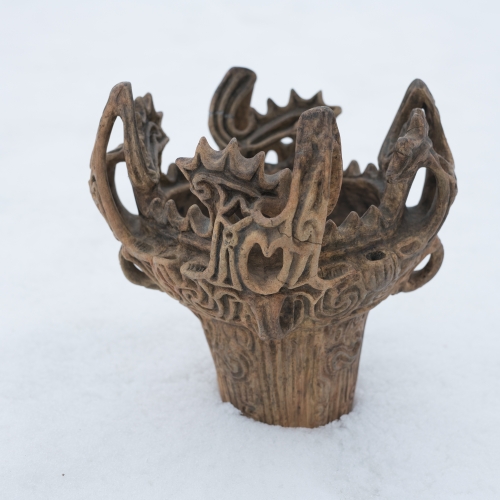
5
#
Forest
If there is a land where the breath of the forest has always been deeply entwined in all lives...
The river terraces are home to a stable forest environment where the Jomon people were able to live in coexistence with the forest for over ten thousand years. Even recently various types of trees were closely integrated into the life of Tsunan, being put to good use and providing sustenance. There is a strong relationship between high snowfall and flora, and the heavy snow region in Tsunan is the southernmost point where the Snow Camellia grows.
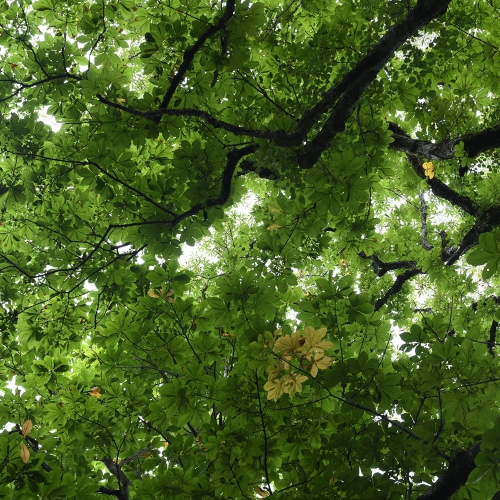
6
#
Water
If there is a land pulsing with water continuously springing up from the depths...
The famous water at Ryugakubo pond, which is a popular site with visitors, completely refills with fresh spring water every day. The water from the snowmelt soaks through the Naeba lava layer and springs up again on the border of the Uonuma group. The abundant springs that can be found around Tsunan to this day support agriculture on the upper highland terraces.
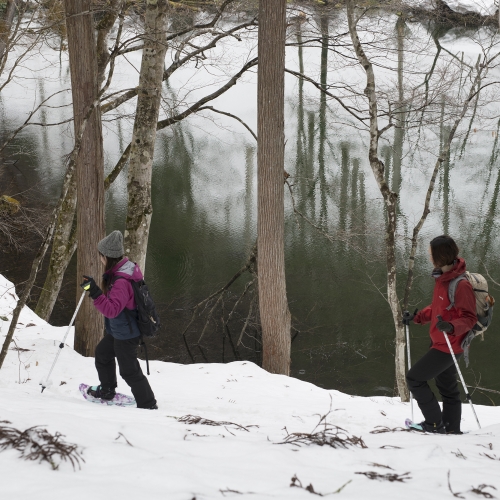
7
#
Snow
If there is a land buried under snow where deep wisdom lies...
The moist air from the warm current that flows in the Sea of Japan is blown by the winds from the continent, and as it passes over Tsunan it drops vast amounts of snow. This mechanism is thought to have started around 8,000 years ago. This heavy snow environment gave growth to abundant forests such as beech, inspired a sturdy architectural style and snow removal systems, and necessitated a special food system, and all these effects gave birth to a unique snow country culture. The heavy snow with a high moisture content creates an unusual landscape of rounded contours. Tsunan is also part of the Snow Country Tourism Zone which promotes the region and its unique snow country culture.
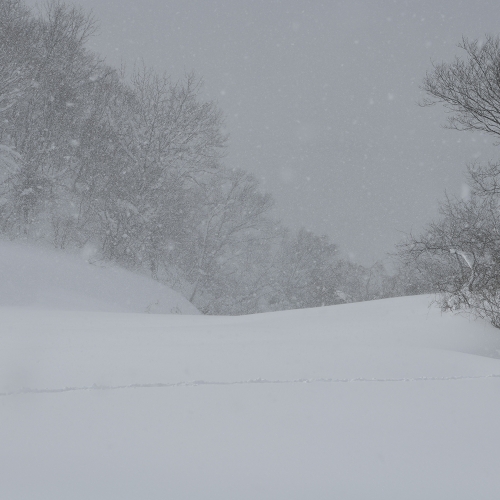
8
#
Geography
And whatever unfolds in the future, everything will return to this land...
We live in an information society and opportunities to feel supported by the earth and part of nature are disappearing. People have gone through history having relied on the earth while adapting to environmental and geographical changes. It goes without saying that this is still the case today.
These days, with our modern society obsessed with pursuing economic rationality, and now forced to reflect on climate change, perhaps what is required of us is to regain the perspective of living with the support of the land?
Coming into contact with the relaxing activities in Tsunan, where you can sense the deep thrum of the earth all around, visitors can contemplate their connection with the land and the future. Tourism Tsunan aims to provide these kinds of opportunities.
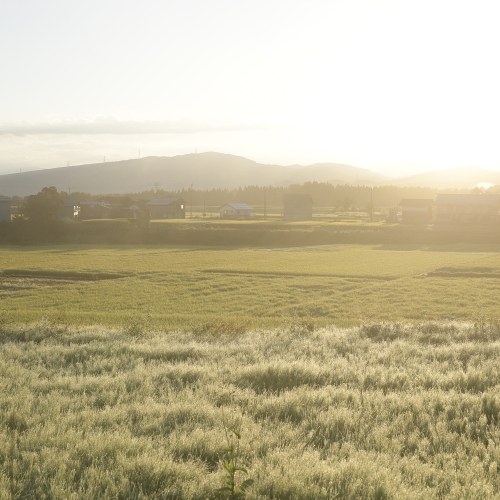
9
©2024 Tourism Tsunan